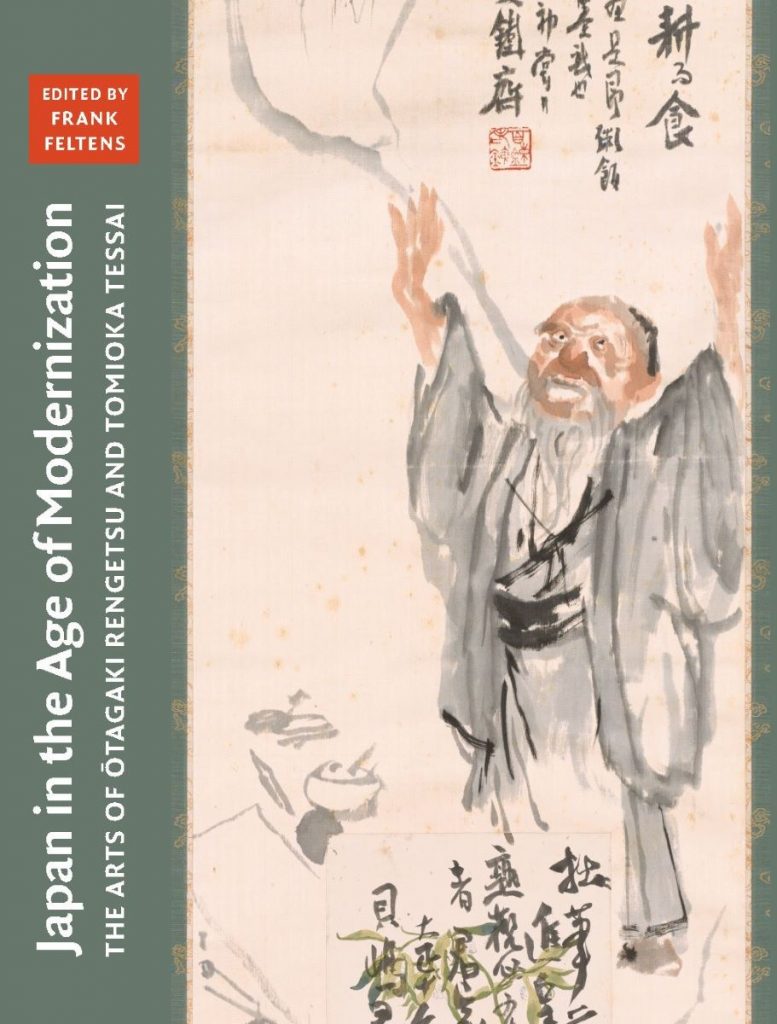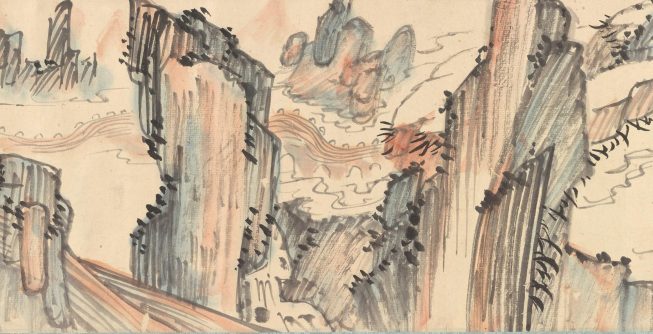August 13, 2022–January 28, 2024
-
Dates
-
Location
Freer Gallery of Art | Gallery 8
-
Collection Area
Japanese Art
Tomioka Tessai (1836–1924) exemplifies the modern Japanese painter. Contemporaries praised his avant-garde works, yet Tessai created his nonconformist paintings in a traditional way, basing them on ancient Japanese art and Ming and Qing paintings imported from China. Tessai’s teacher Ōtagaki Rengetsu (1791–1875)—nun, potter, calligrapher, poet, political activist—was at the vortex of immense political changes in Japan as the country’s feudal system collapsed and a constitutional monarchy was established. Rengetsu’s art, which harks back to inspirations from the twelfth century, inspired a generation of modern artists like Tessai.
Meeting Tessai highlights a transformative gift of early modern and modern Japanese paintings and calligraphy from the Mary and Cheney Cowles Collection. It is also the first major American exhibition in five decades to explore the significance of pan–East Asian influences—a pertinent topic in today’s interconnected world—through the work of Tessai, Rengetsu, and modern Japanese painting.
Related Publication
Japan in the Age of Modernization: The Arts of Ōtagaki Rengetsu and Tomioka Tessai
Author List: Frank Feltens (ed.)
Publisher: Smithsonian Institution Scholarly Press
Publication Date: May 15, 2023
After Commodore Matthew Perry’s U.S. Navy ships arrived on its shores in the 1850s, Japan entered an age of rapid modernization and soon became the first Asian nation with a military and industry on par with Western imperialist countries in the late nineteenth and early twentieth centuries. While grappling with the effects of rapid Western-inspired modernization, the Japanese searched for their cultural identity, increasingly turning to their past as well as to China for inspiration. This book’s essays, by scholars from the United States, Japan, and Europe, look beyond Western industrialization to examine China’s role in forming Japan’s modern identity.

Support
Generous support for the museum’s Japanese art program is provided by
Related Exhibitions
-

Imagined Neighbors: Japanese Visions of China, 1680–1980
March 16–September 15, 2024
-

Japan Modern: Prints in the Age of Photography
September 29, 2018–January 24, 2019
-

Japan Modern: Photography from the Gloria Katz and Willard Huyck Collection
September 29, 2018–January 24, 2019
Blind Men Appraising an Elephant (detail), Tomioka Tessai 富岡鉄斎 (1836–1924), Japan, Taisho era, 1921, hanging scroll, ink and color on silk, The Mary and Cheney Cowles Collection, Gift of Mary and Cheney Cowles, Freer Gallery of Art, F2019.3.34a-f
- Jump To...




